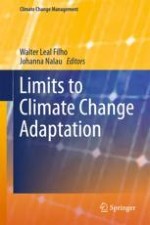2018 | OriginalPaper | Buchkapitel
5. Climate Change and Migration in Bangladesh: Empirically Derived Lessons and Opportunities for Policy Makers and Practitioners
verfasst von : Johannes Luetz
Erschienen in: Limits to Climate Change Adaptation
Aktivieren Sie unsere intelligente Suche, um passende Fachinhalte oder Patente zu finden.
Wählen Sie Textabschnitte aus um mit Künstlicher Intelligenz passenden Patente zu finden. powered by
Markieren Sie Textabschnitte, um KI-gestützt weitere passende Inhalte zu finden. powered by
